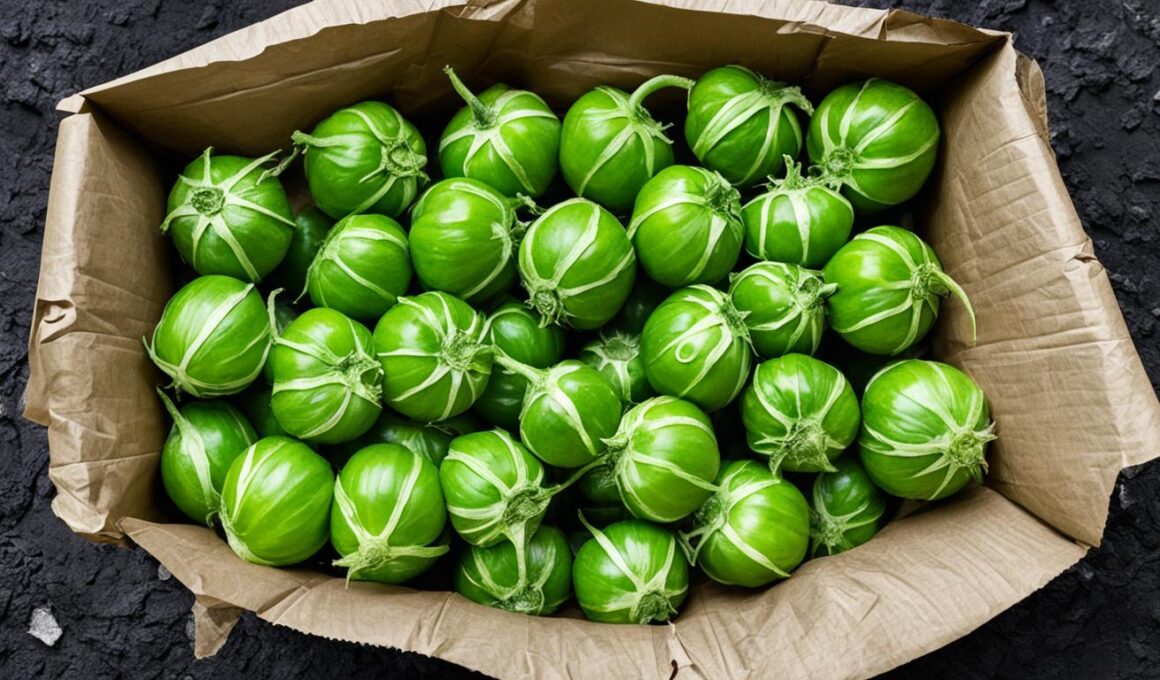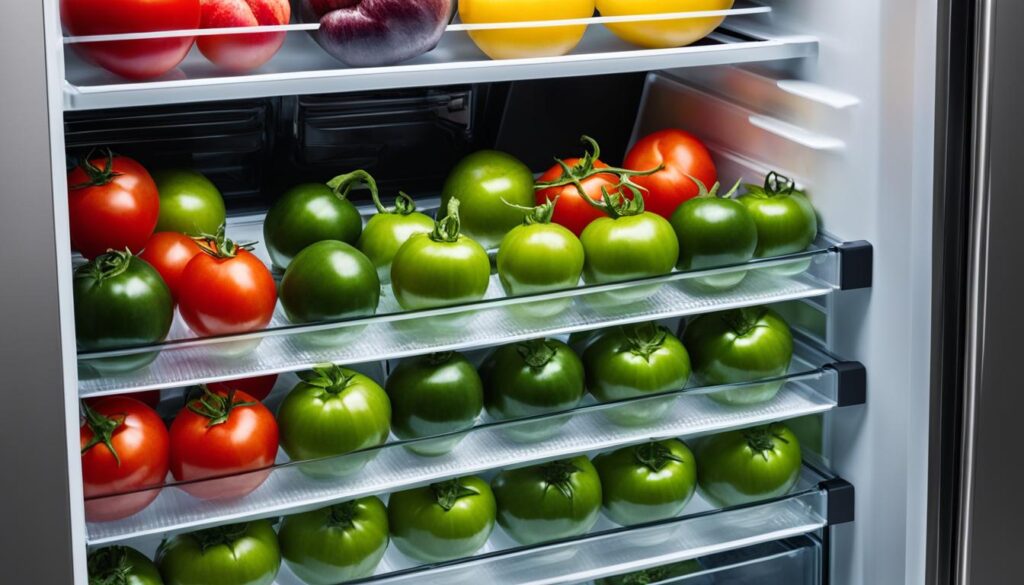Welcome to our guide on how to store tomatillos! If you love cooking with these vibrant and versatile fruits, knowing the best storage methods is crucial to keep them fresh for as long as possible. Whether you have freshly harvested tomatillos from your garden or bought them from the store, proper storage will ensure their quality and maximize their shelf life.
In this article, we will discuss effective techniques for storing tomatillos in both the refrigerator and the freezer. By following these tips, you can enjoy the delicious taste of fresh tomatillos whenever you desire, even weeks or months after harvesting or purchasing them.
Let’s dive in and explore the different methods for storing tomatillos to maintain their optimal flavor and texture!
Storing Tomatillos in the Fridge
To ensure the freshness and longevity of your tomatillos, storing them in the refrigerator is the way to go. Here’s a step-by-step guide on how to do it:
- Leave the husks on: Tomatillos are naturally enclosed in a protective husk that helps to extend their shelf life. Keep the husks intact to shield the tomatillos from moisture and damage.
- Inspect for any blemishes: Before storing, check your tomatillos for any signs of bruising or mold. Discard any damaged ones to prevent spoilage.
- Place them in a paper bag: Place the tomatillos in a paper bag. This will help absorb excess moisture and prevent them from becoming mushy.
By storing your tomatillos in the fridge following these steps, you can expect them to stay fresh for around 2-3 weeks. Just remember to keep them in the bag, and they’ll be ready to use whenever you need them!
Freezing Tomatillos
If you have an excess of tomatillos or won’t be able to use them before they go bad, freezing is a great option. Freezing tomatillos can help you preserve their freshness and taste for future use. Follow these steps to freeze tomatillos:
- Prepare the tomatillos: Start by washing the tomatillos thoroughly under running water. Remove the husks and any dirt or debris.
- Blanch the tomatillos: Bring a large pot of water to a boil. Carefully place the tomatillos in the boiling water and blanch them for about 1 minute. This process helps retain their vibrant color and texture.
- Cool and dry: Using a slotted spoon, transfer the blanched tomatillos to a bowl of ice water to cool them down quickly. Once cooled, pat them dry with a clean kitchen towel or paper towels.
- Package for freezing: Place the dried tomatillos in plastic zip-top bags, squeezing out as much air as possible before sealing them. Alternatively, you can use airtight containers or freezer-safe containers.
- Label and freeze: Label the bags or containers with the date of freezing and the contents. Place them in the freezer, making sure to lay them flat for even freezing.
Note: It’s advisable to freeze tomatillos in small portions to make it easier to thaw only the amount you need for your recipes.
When stored properly in the freezer, tomatillos can maintain their quality for up to 3 to 6 months.
When you’re ready to use the frozen tomatillos, thaw them in the refrigerator overnight or immerse the sealed bag or container in cool water until thawed. Avoid thawing them at room temperature to prevent potential bacterial growth.
Now that you know how to freeze tomatillos, you can conveniently store them for future use. Whether you’re planning to make flavorful salsas, soups, or stews, having frozen tomatillos on hand will save you time and ensure you always have this versatile ingredient available.
Conclusion
Proper storage of tomatillos is crucial for maintaining their freshness and flavor over time. By following these simple tips, you can ensure that your tomatillos stay in optimal condition for an extended shelf life.
Whether you choose to store tomatillos in the fridge or freezer, the key is to handle them with care. Harvesting at the right time is essential to ensure that you have ripe, flavorful tomatillos. Once harvested, remove any husks and gently wash the tomatillos to remove dirt and residue.
If you plan to use the tomatillos within a couple of weeks, storing them in the fridge is the best option. Place them in a paper bag to allow for proper airflow and prevent them from becoming too damp. Stored this way, fresh tomatillos can last for up to two to three weeks, adding a burst of tangy flavor to your dishes.
Alternatively, if you have a surplus of tomatillos or want to preserve them for longer periods, freezing is the way to go. Simply wash and dry the tomatillos, then store them in airtight plastic zip-top bags or containers. Frozen tomatillos can maintain their quality for several months, allowing you to enjoy their taste and versatility year-round.
Should Tomatillos Be Pruned Like Crabapple Trees?
When it comes to pruning crabapple trees, there are specific techniques to follow. However, when it comes to tomatillos, they should not be pruned in the same way. While tomatillos may benefit from some light pruning to improve airflow and sunlight exposure, the process differs from the pruning crabapple trees guide.










